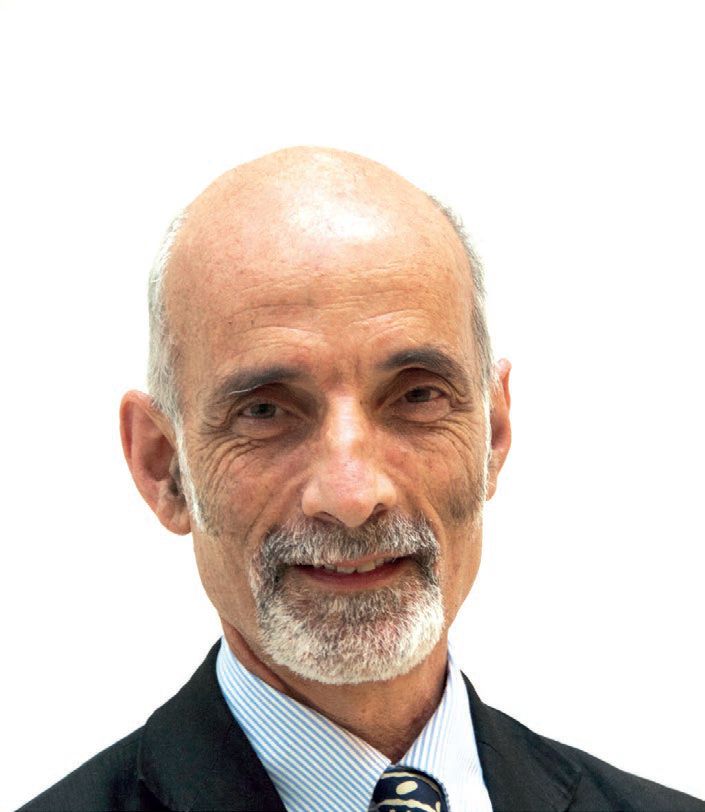
Physiology News Magazine
Editorial
News and Views
Editorial
News and Views
Jonathan Ashmore
President
https://doi.org/10.36866/pn.94.5

Two years ago when I took over from Mike Spyer as the Society’s President at the Edinburgh meeting in 2012 we were in the middle of planning how we wanted to organise The Society’s office when we moved from Peer House. Now we occupy Hodgkin Huxley House (HHH) as though we have always been there. Officially opened in May 2013 by David Willetts MP, Minister for Universities and Science, we have it being used for our Council business as well as small meetings and lectures. If you have not yet been to see HHH, or even started to think of holding your meetings there yet, you should! It is there for your use.
Two years ago we were only thinking about starting a new open access journal. Now, together with the American Physiological Society, we have launched Physiological Reports. With Sue Wray as Editor-in-Chief, it has been up and running for nearly a year and has published 178 research papers in it’s first year with a further 42 to the end of February. Is open access the way of the future? We don’t know. Speak to any publisher and they will say that they are looking at a mixture of conventional and open access publishing. All of us have been pursued by requests to submit to all sorts of new journals (this may have died down a little, or maybe they have just given up on me). Some have been supported by institutions as powerful as the Wellcome Trust, some clearly are opportunistic ventures run from backrooms. It stirs up fierce emotions: Randy Shekman, on the morning of his Nobel acceptance speech, used the airtime for the advocacy of open access. Nevertheless, the unaddressed problem remains quality control – how does the reader know that the science does not have major flaws? Caveat lector!
So it seems to me that the strength of The Society’s journals is precisely that – the quality of the papers and reviewing system that we provide. Papers submitted to The Journal of Physiology and Experimental Physiology seem to stand the test of time and remain cited for many years. Within the last two years we saw the 60th anniversary of the publication in The Journal of the Hodgkin–Huxley papers on the action potential. The papers really initiated modern neuroscience and remain essential reading, with an exponentially increasing citation rate. These papers do indeed stand the test of time and show how impact factors completely distort the essence and significance of scientific publishing. Indeed, 1952 was an annus mirabilis. The year also saw the publication of the papers by Fatt and Katz in which they used microelectrodes to show synaptic and miniature end-plate potentials. Also published, of course, by The Journal of Physiology. (An interview with Paul Fatt, who has just celebrated his 90th birthday, is available on The Journal’s website: journals. physoc.org/site/misc/History/Oral_ Histories/OH_Paul_Fatt.pdf).
The other major event in this eventful couple of years has, of course, been the IUPS meeting held in Birmingham in July last year. This was only the fifth such congress ever held in the UK. When I last wrote for PN, IUPS 2013 was just getting up to speed. There was considerable enthusiasm and energy being put into the preparations by the organising team. But we did not know whether the Congress was going to be a success. I think everyone would now agree it was a great scientific and social success. It even attracted physiologists from North Korea and Burma – for the first time ever.
Such successes come at a cost, but The Society was, I am glad to say, committed to underwriting this congress from the instant we agreed to host it. The Society is a charity as well as providing the best services for its Members. As a charity we need be organised in such a way as to be able to fulfil our charitable objectives. What are they? It is worth thinking about and a topic to which Council frequently returns. We have obviously moved on from being a dining club, as it was conceived by The Society’s founders. We now cover a whole range of activities, from organising meetings to influencing policy, from providing grants to Members to communicating physiology in schools and universities. We try to support the discipline at all levels. This is quite a brief.
My two years as President have gone by in a flash. The task has been immeasurably assisted by Philip Wright, The Society’s Chief Executive, and his enthusiastic and able staff. When I step down at the AGM in July I will be passing on the baton to Richard Vaughan-Jones, and I know that The Society will be in excellent hands. He has been chairing the ‘Health of Physiology’ project which has been looking at who, what and where our Members are. Indeed, I often think that every researcher, every teacher and every student in the biomedical field should admit to being a physiologist. It does not take much learning to realise that physiology is the study of the nature of life, not simply its description – a distinction without which we cannot really profess to understand the complexity of living things. We live in an age when such an understanding is critical, and I hope we agree that The Society has an essential role to play in its pursuit.
